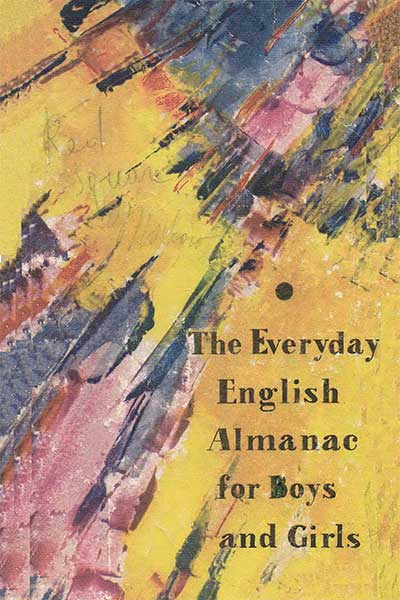Учебник оцифровал Василий Дёмин.
_____________________
A STORY OF AMERICAN INDIANS 1
This week we shall begin to tell you a story of American Indians.
Indians have lived in America a very, very long time, but how long, nobody can be quite sure.
Scientists think that at one time nobody at all lived in North or South America, but there were people in Asia. They lived in small groups, and they roamed about always looking for more and better food. Some of those people roamed as far as the eastern tip of Siberia, which is near the western tip of Alaska. There is water between these two tips now, but some scientists think that long ago there may have been 2 land between Siberia and Alaska.
Perhaps the first pioneers to America just walked across from Asia; or they may have come in small boats.
By the time the Spaniards discovered America more than 450 years ago, these new people had settled down in different places in America and had found different ways of living. The Spaniards gave all these people the name of “Indians”. That name was a mistake, because when the Spaniards first came to America, they thought that they had found the Indies.3 But the Indies were islands on the other side of the world.
1 From “The First Book of Indians” by Benjamin Brewster. New York. 1950.
2 long ago there may have been — в давние времена, возможно, была
3 the Indies I'indiz]— West Indies — Вест-Индия
There were very many kinds of American Indians. It is very difficult to speak about all of them. We shall tell you about a few of the many different Indian tribes in America.
A tribe is a group of families who are all related to each other.1 Often, Indians in one tribe did not have a special name for their tribe. But they had names for other tribes, and we use them today when we talk about Indians.
The members of each tribe lived and worked together, and each tribe had its own way of living. The Indians spoke many different languages. Often one tribe could not understand the language of its neighbour. So the two tribes used a language of signs that Indians had invented. This sign language was not exactly the same everywhere, but as a rule Indians used it when they met.
Many of the Indians whom the white people met when they landed in America, lived in woods. They knew where to find food, and how to make fire and cook food, and they made knives of stone. They could kill deer and other animals with spears, or bows and arrows, or traps. They could make houses, and they had comfortable clothes.
Other Indians lived on the wide plains and on the sea-coasts and in the deserts. They all knew how to make a living where they were, and they could do many things better than the white pioneers. They could send messages very fast by smoke signals. Some Indians could run a hundred miles in one day. Their clothes made of deerskin were so comfortable, that the white men soon copied them.
The Indians had no alphabet, they could neither read nor write, but they could draw very well. They made their drawings on stones or bark.
After the white men came, one Indian chief named Sequoya2 decided that his people needed an alphabet. He saw how strong it made the white men to learn from words that were written down. So Sequoya invented a special alphabet for the language which his people spoke, and he taught them how to read and write.
The first white men in America often traded with the Indians for furs, and they taught the Indians how to shoot with guns so that there would be more furs to buy. But guns can be used not only in hunting but in war too.
1 who are all related to each other — которые связаны между собой родственными отношениями
2 Sequoya [sa'kwoia]
And later on,1 when the white men wanted to take away the Indians’ land for farms, the Indians fought courageously with their guns because they wanted to keep their hunting-grounds for themselves. But there were more white men than Indians, and the white men had more guns, so they won the wars. They turned the Indians’ hunting-grounds into farms and cities. They even killed most of the buffaloes on which many Indians depended for food. There were many greedy white hunters who only wanted the hides.
But while the white men were winning the wars and taking the land, they also learned from the Indians how to live in that country.
Let’s see how some of the Indians lived.
(To be continued next vueek.)
1 later on — позднее
Riddles
1. What word is always pronounced wrong?
2. How can you make five less if you add one to it?
3. Why is it right for В to come before С ?
4. What is a hot time?
5. Why is the letter “E” like London?
6. How many sides has a circle?
7. What is difficult to beat?
8. Why is the letter “E” like death?
9. Which is correct, to say “five and four is eleven”
or “five and four are eleven”?
10. What must you add to nine to make it six?
(The answers are on page 16.)
KOHEЦ ФPAГMEHTA КНИГИ
|

